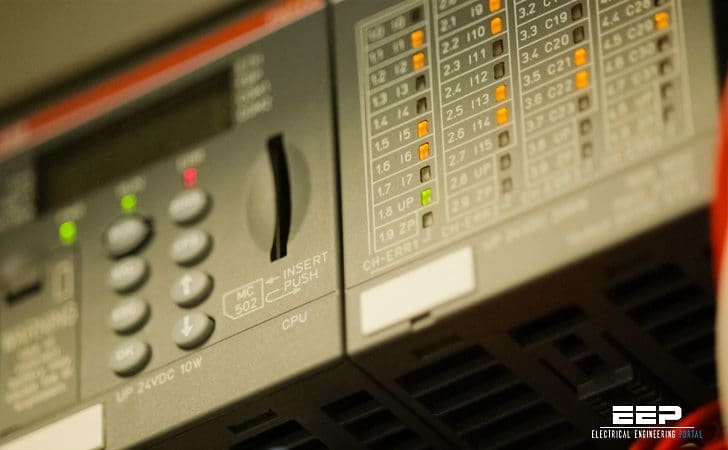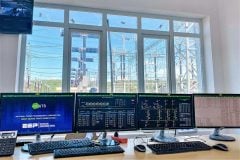What is the SCADA system?
SCADA is the technology that enables a user to collect data from one or more distant facilities and to send limited control instructions to those facilities. It’s important to note the words “distant” and “limited” in this definition.

SCADA has been developed to monitor and control very large process facilities. SCADA is not normally used to operate a small facility like a factory. Although, some factories are large enough to benefit from using SCADA.
Control systems like programmable logic controllers (PLC) or distributed control systems (DCS) will do a better job for most factory control and monitoring.
An example of a very large process facility is a group of wells that produce and gather the oil and gas from a reservoir beneath fifteen square kilometers (3,700 acres) of farmland or forest. Another example is a transmission system, including wires, switches, and transformers, that moves electrical power across entire states, provinces, or countries.
A supervisory control system sends a process target to parts of the system, lets those parts attain the target, and monitors them to ensure that the targets are being reached.


Whenever a definition is written down, it is like a challenge to the reader to think of exceptions. Someone might say, “I know of a factory where SCADA is used to measure a flow rate,” or “Our SCADA system does detailed, not supervisory, control”.
Please accept the definition as given, at least until you finish reading this text. It may be that you will reconsider your argument. It may also be that you will find that your system is not really a SCADA system, but is a large DCS.
This unit discusses some of the purposes that a SCADA system can be put to, introduces the elements that comprise such a system, and illustrates layouts that are common to SCADA systems.
Purpose of a SCADA System
SCADA allows a human operator, in a location central to a widely distributed process – such as a pipeline system, oil or gas field, hydroelectric generating complex, or irrigation network:
- to make set point changes on distant process controllers,
- to open or close valves or switches,
- to monitor alarms, and
- to gather measurement information.
When the dimensions of the process become very large, hundreds or even thousands of kilometers from one end to the other, one can appreciate the benefits that such a system offers in terms of reducing the cost of routine visits to monitor and control that process.
The benefits grow if elements of the process are not only distant, but physically difficult to reach, perhaps requiring a helicopter or other special transportation. Once the benefits of a SCADA system are recognized, improved control methods can be utilized to operate the facility more efficiently and safely than could be done without the system.
Applicable Processes
SCADA technology is best applied to processes that are //
- spread over large areas,
- relatively simple to control and monitor; and
- require frequent, regular, or immediate intervention.
The following examples should help you visualize the range of applicable processes that SCADA is suitable for:
A. Groups of small hydroelectric generating stations which are turned on or off in response to customer demand and are usually located in remote locations. They can be controlled easily by opening or closing valves to feed water to turbines. They need to respond quickly to changes in demand and must be monitored continuously.


B. Oil or gas production facilities – including wells, gathering pipelines, fluid measurement equipment, and pumps – are usually spread over large areas, require relatively simple controls such as turning motors on and off, need to gather fluid metering information regularly, and must respond quickly to conditions in the rest of the field.
C. Pipelines for gas, oil, chemicals, or water have elements located at various distances from a central control point that can be controlled by opening or closing valves or starting and stopping compressors or pumps, and must be capable of responding quickly to market conditions and leaks of dangerous or environmentally sensitive materials.
D. Electric transmission systems may cover thousands of square kilometers, can be controlled by opening or closing switches, and must respond almost instantly to load changes on the lines.
E. Irrigation systems often cover hundreds of square kilometers, can be controlled by opening and closing simple valves, and require meter data gathering to allow proper billing for the water supplied to customers.
F. At a heavy oil upgrader, controlled by a distributed control system, there are several surface water pumping stations. It is necessary to monitor the water levels as well as to turn the pumps on or off in response to tank levels in the upgrader. The pumps are located far enough away from the control room that it would be very expensive to install dedicated data cables.
Typical signals gathered from remote locations include status indications, alarms, analog values, and totalized meter values. This seems like a small list of simple options, but a vast range of information can be gathered with this apparently limited menu of available signal types.
Signals sent from the SCADA system’s central location to the remote sites are usually limited to discrete binary bit changes or to analog values addressed to a device at the process. An example of a binary bit change could be an instruction to a motor to change from OFF to ON.
An example of an analog value is an instruction to a valve controller to change the valve set point from 60% open to 70% open. Given simple signal types like these and a lot of imagination, nearly any control change may be effected.
Reference // SCADA: supervisory control and data acquisition / by Stuart A. Boyer (purchase from Amazon)











I need help implementing a remote access project that acquires data on a machine that runs on windows embedded XP and uses TWINCAT for UI. Any pointers are welcome. Thank u. grt work BTW
SIR EDVARD! Thanks very much for EEP.. This platform has been very helpful to many and keep the good work. Your an inspiration to many
This is a very good article. Here’s why. There is a difference between DCS and SCADA and if you don’t know the difference, then you start to interchange the acronyms. We’re building a SCADA on the project I’m working on for the transit business